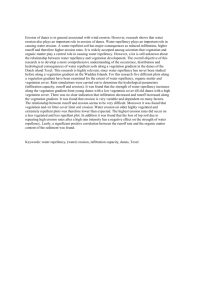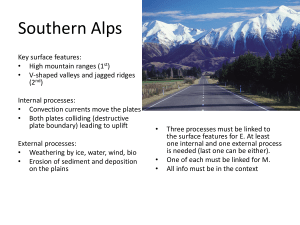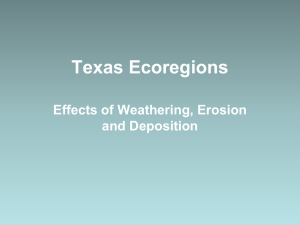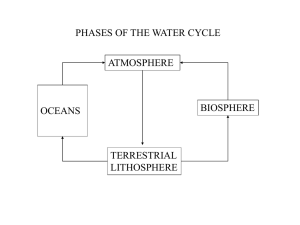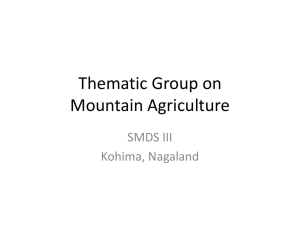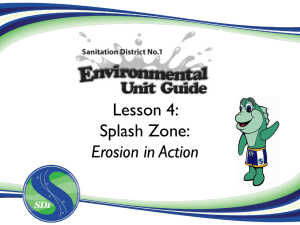Project Description
advertisement
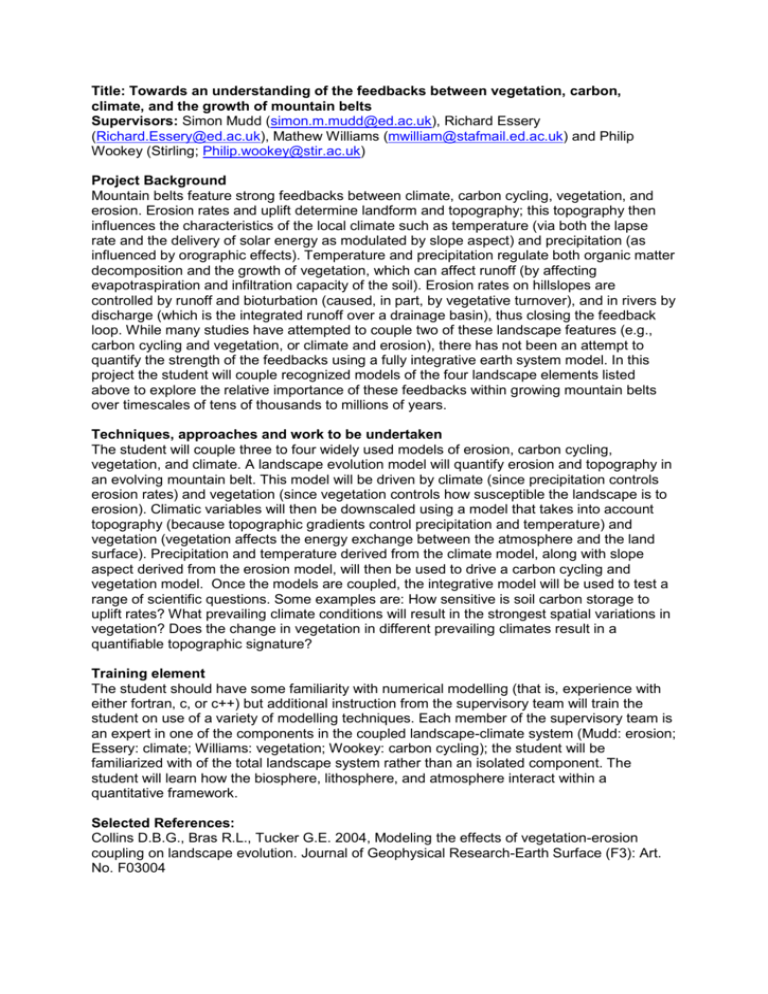
Title: Towards an understanding of the feedbacks between vegetation, carbon, climate, and the growth of mountain belts Supervisors: Simon Mudd (simon.m.mudd@ed.ac.uk), Richard Essery (Richard.Essery@ed.ac.uk), Mathew Williams (mwilliam@stafmail.ed.ac.uk) and Philip Wookey (Stirling; Philip.wookey@stir.ac.uk) Project Background Mountain belts feature strong feedbacks between climate, carbon cycling, vegetation, and erosion. Erosion rates and uplift determine landform and topography; this topography then influences the characteristics of the local climate such as temperature (via both the lapse rate and the delivery of solar energy as modulated by slope aspect) and precipitation (as influenced by orographic effects). Temperature and precipitation regulate both organic matter decomposition and the growth of vegetation, which can affect runoff (by affecting evapotraspiration and infiltration capacity of the soil). Erosion rates on hillslopes are controlled by runoff and bioturbation (caused, in part, by vegetative turnover), and in rivers by discharge (which is the integrated runoff over a drainage basin), thus closing the feedback loop. While many studies have attempted to couple two of these landscape features (e.g., carbon cycling and vegetation, or climate and erosion), there has not been an attempt to quantify the strength of the feedbacks using a fully integrative earth system model. In this project the student will couple recognized models of the four landscape elements listed above to explore the relative importance of these feedbacks within growing mountain belts over timescales of tens of thousands to millions of years. Techniques, approaches and work to be undertaken The student will couple three to four widely used models of erosion, carbon cycling, vegetation, and climate. A landscape evolution model will quantify erosion and topography in an evolving mountain belt. This model will be driven by climate (since precipitation controls erosion rates) and vegetation (since vegetation controls how susceptible the landscape is to erosion). Climatic variables will then be downscaled using a model that takes into account topography (because topographic gradients control precipitation and temperature) and vegetation (vegetation affects the energy exchange between the atmosphere and the land surface). Precipitation and temperature derived from the climate model, along with slope aspect derived from the erosion model, will then be used to drive a carbon cycling and vegetation model. Once the models are coupled, the integrative model will be used to test a range of scientific questions. Some examples are: How sensitive is soil carbon storage to uplift rates? What prevailing climate conditions will result in the strongest spatial variations in vegetation? Does the change in vegetation in different prevailing climates result in a quantifiable topographic signature? Training element The student should have some familiarity with numerical modelling (that is, experience with either fortran, c, or c++) but additional instruction from the supervisory team will train the student on use of a variety of modelling techniques. Each member of the supervisory team is an expert in one of the components in the coupled landscape-climate system (Mudd: erosion; Essery: climate; Williams: vegetation; Wookey: carbon cycling); the student will be familiarized with of the total landscape system rather than an isolated component. The student will learn how the biosphere, lithosphere, and atmosphere interact within a quantitative framework. Selected References: Collins D.B.G., Bras R.L., Tucker G.E. 2004, Modeling the effects of vegetation-erosion coupling on landscape evolution. Journal of Geophysical Research-Earth Surface (F3): Art. No. F03004 Motavalli, P.P., C.A. Palm, W.J. Parton, E.T. Elliott, and S.D. Frey. 1994. Comparison of laboratory and modeling simulation methods for estimating soil carbon pools in tropical forest soils. Soil Biology & Biochemistry 26 :935-944. Ojima, D.S., B.O.M. Dirks, E.P. Glenn, C.E. Owensby, and J.M.O. Scurlock. 1993. Assessment of C budget for grasslands and drylands of the world. Water, Air, and Soil Pollution 70 :95-109. Roe, G.H. 2005. Orographic Precipitation, Annual Review of Earth and Planetary Sciences . 33 :645-671 Tucker G.E., 2004, Drainage basin sensitivity to tectonic and climatic forcing: Implications of a stochastic model for the role of entrainment and erosion thresholds. Earth Surface Processes and Landforms 29(2): 195-205. Advertising Summary: The project will quantify the feedbacks between vegetation, carbon cycling, climate, and erosion in tectonically active mountain belts. Links with SAGES themes: This project is designed to intimately mesh with the stated objectives of the three scientific themes within SAGES. In all three themes a key aspect of SAGES is to identify how the theme’s focus (landscape, carbon, and atmosphere) responds to global change. As we highlight in the project background, landscape, carbon and atmosphere are inextricably linked in tectonically active mountain belts. Despite this linkage, the coupling of erosion, carbon, and climate has yet to be quantitatively explored at the mountain belt scale; the purpose of this project is to addresses this fundamental gap in our scientific understanding of feedbacks between the lithosphere, biosphere, and atmosphere.
